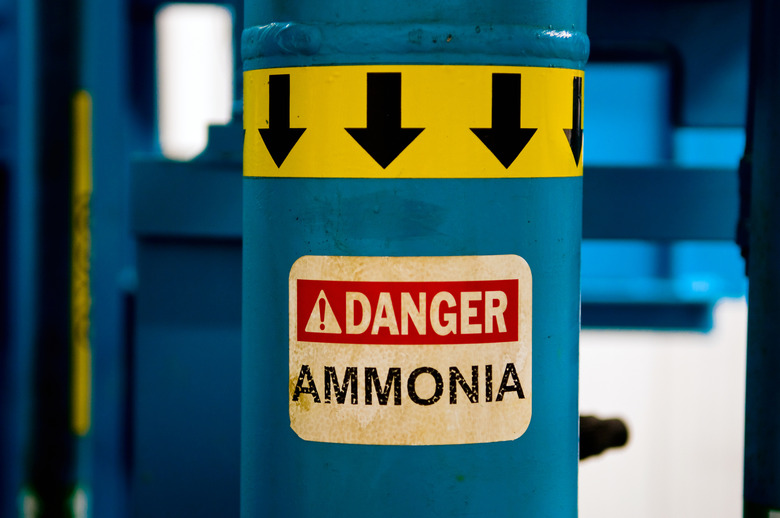Equation For Dissociation Of Ammonia In Water
When some substances dissolve in water, they break into their ions without reacting with the solvent. For example, sodium chloride breaks into sodium (Na+) and chloride (Cl-) ions that exist in aqueous form in the water. Other substances, such as ammonia (NH3), dissociate, which means they form new ions by reacting chemically. When the substance accepts protons from water, as with ammonia, it acts as a base. When it donates protons to water, it acts as an acid.
Step 1
Identify the formulas for the equation's reagents. Ammonia's formula is NH3. Water's formula is H2O.
Step 2
Remove a hydrogen particle from water's formula and add it to ammonia's to form the product formulas. Removing a hydrogen particle from H2O produces OH. Adding one to NH3 produces NH4.
Step 3
Add positive and negative signs to the products to represent their charges. Removing a positively-charge proton from water leaves it negatively-charged, so add a negative sign to the hydroxide particle ("OH-"). Adding one to ammonia leaves it positively-charged, so add a positive sign to the ammonium particle ("NH4+").
Step 4
Place the reactants and products on either side of an arrow, forming an equation:
NH3 + H2O -> NH4+ + OH-
References
Cite This Article
MLA
Menezes, Ryan. "Equation For Dissociation Of Ammonia In Water" sciencing.com, https://www.sciencing.com/how-12157922-equation-dissociation-ammonia-water/. 7 August 2017.
APA
Menezes, Ryan. (2017, August 7). Equation For Dissociation Of Ammonia In Water. sciencing.com. Retrieved from https://www.sciencing.com/how-12157922-equation-dissociation-ammonia-water/
Chicago
Menezes, Ryan. Equation For Dissociation Of Ammonia In Water last modified August 30, 2022. https://www.sciencing.com/how-12157922-equation-dissociation-ammonia-water/
